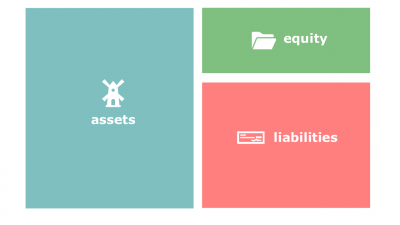Double-entry bookkeeping
Double-entry bookkeeping (or, simply, double-entry; hereinafter, the Method) is the method of bookkeeping in which all financial transactions are entered twice –- as a debit in one account and as a credit to another. All the debits need to equal the same as the credits. If they don't it is called being out of balance and the error will need to be found.
Definitions
According to College Accounting: A Practical Approach by Slater (13th edition),
- Double-entry bookkeeping. An accounting system in which the recording of each transaction affects two or more accounts and the total of the debits is equal to the total of the credits.
Key concepts
- Debit. A debit balance is found on the left hand side of double entry bookkeeping. A debit entry increases assets and expenses, and decreases income, liabilities and equity.
- Credit. Credits can be found on the right hand side of the double entry method of bookkeeping. A credit entry decreases assets and expenses, and increases income, liabilities and equity. Also, money that is owed by a business to a supplier/vendor is called credit. When you want to open an account with a supplier you would most likely fill in what is called a Credit Application. Credit is also money that is owed to a bank on a credit card.
Related concepts
- Bookkeeping. Recording, filing, and retrieving of financial data, as well as producing those financial reports that are required by laws.
